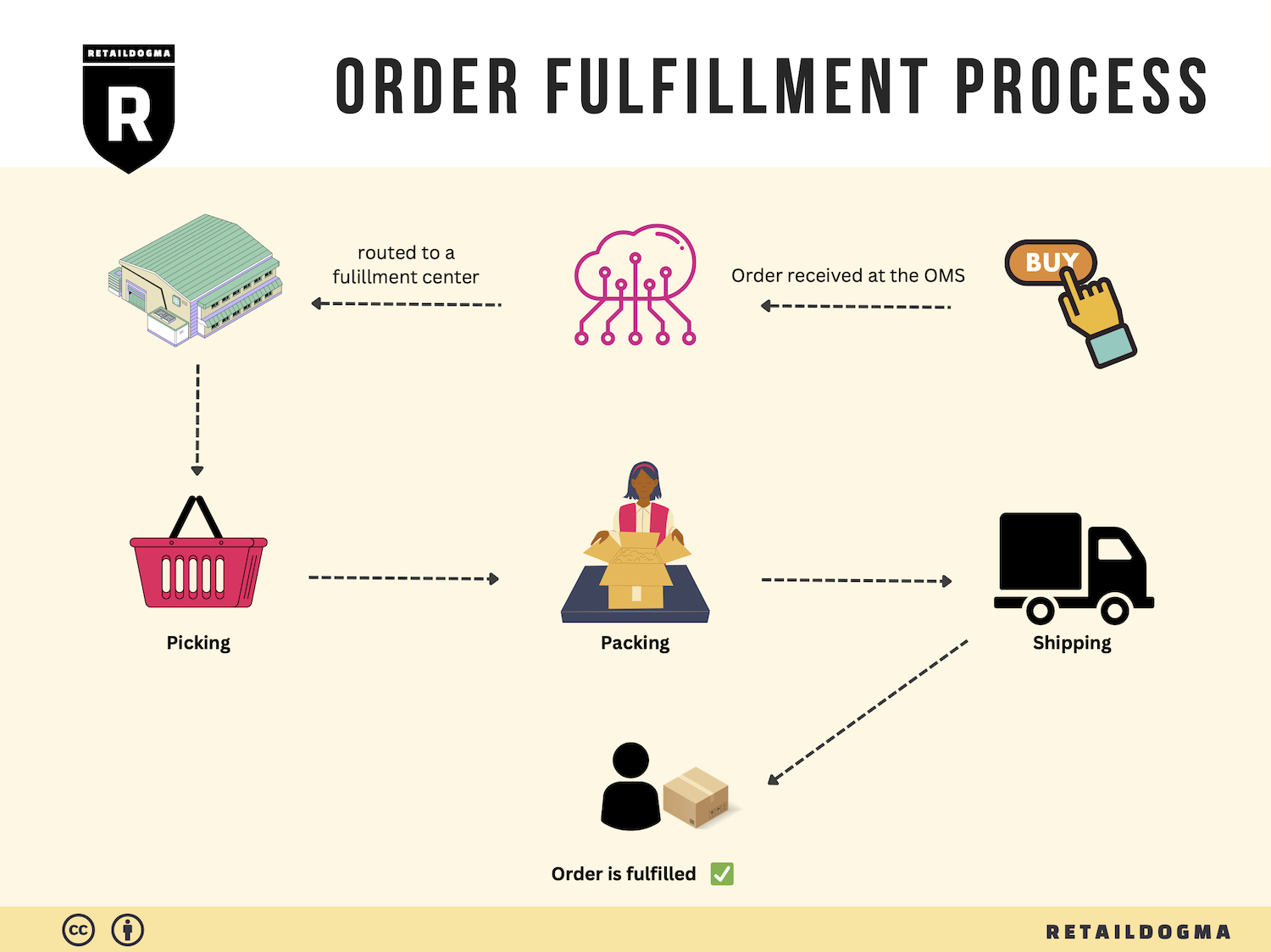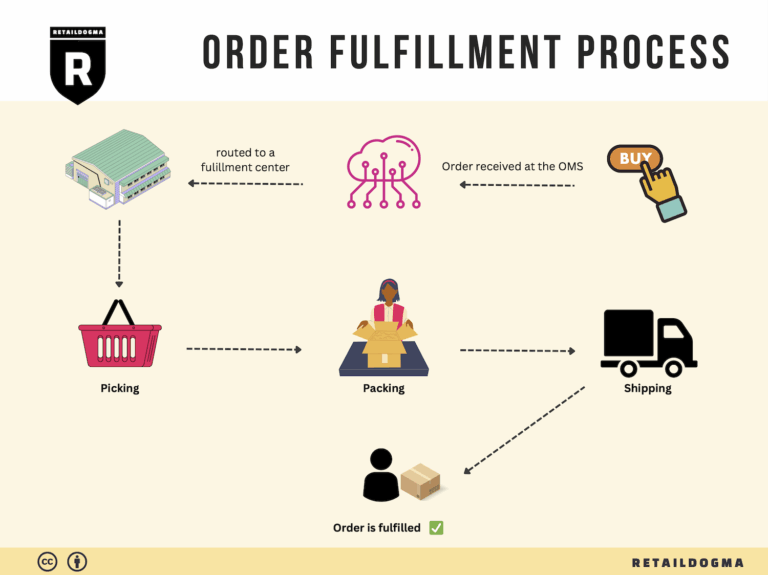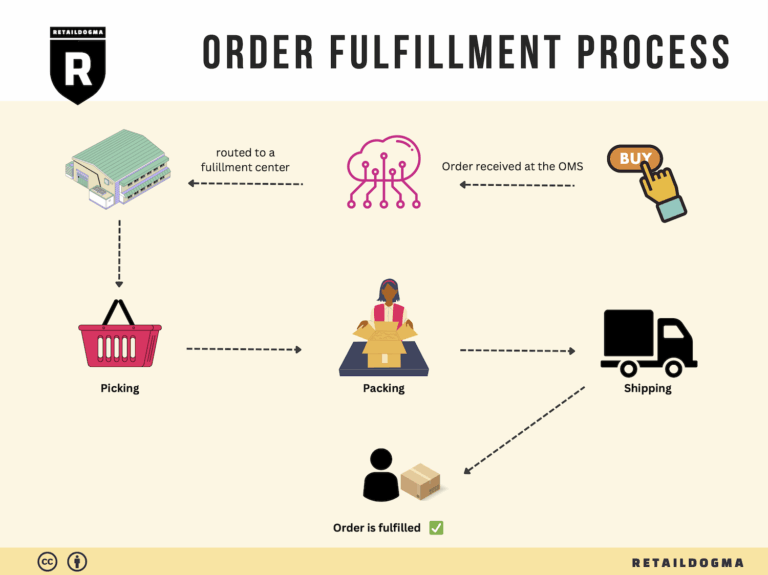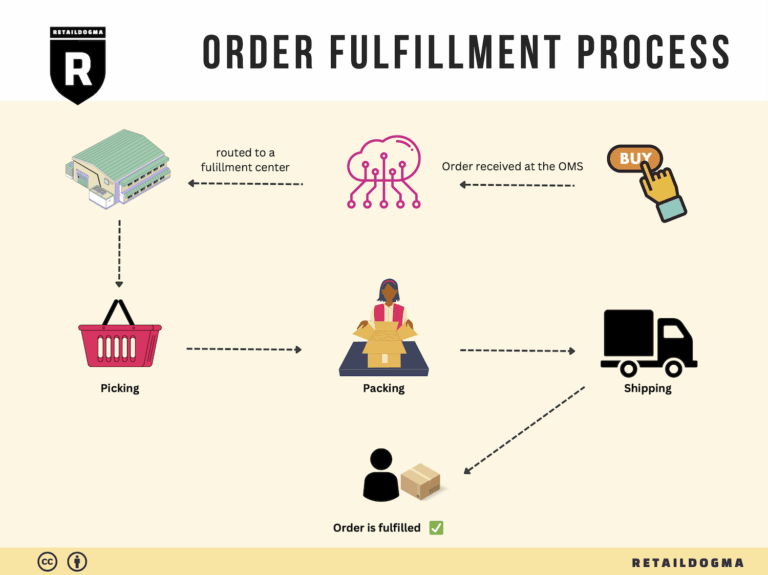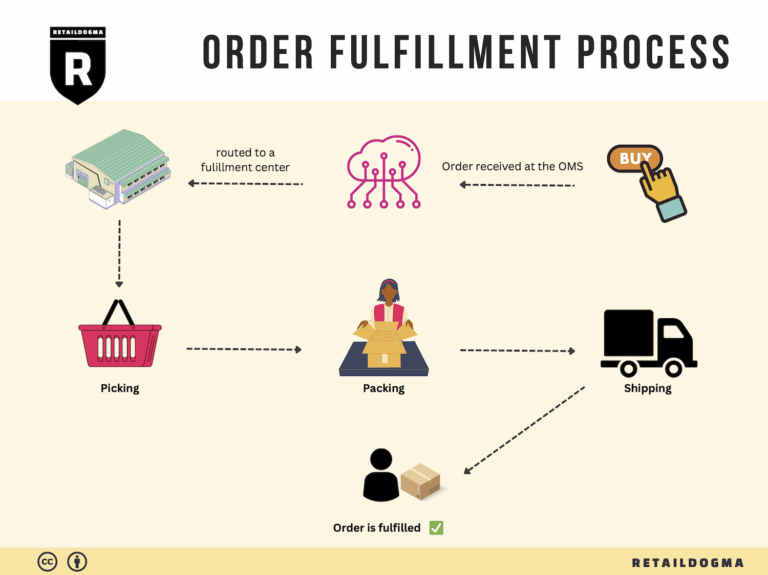Ecommerce Fulfillment Services: The Ultimate Guide (2025)
What is E-commerce Fulfillment? An Introduction for Growing Businesses
Understanding E-commerce Fulfillment: A Key to Scaling Your Business
As an e-commerce business owner, you may find yourself grappling with the complexities of packing and shipping orders. This overwhelming process can divert your attention from essential growth strategies and customer engagement. The reality is that efficient fulfillment is not just a logistical necessity; it is a critical component of your customer experience and overall business success.
At its core, fulfillment is the process of getting a product from your warehouse or supplier to the customer’s doorstep. This involves several stages, including inventory management, order processing, packing, shipping, and returns handling. For growing businesses, mastering these stages can be a daunting task, especially as order volumes increase.
In this guide, we will delve into the various fulfillment models available to you, including Third-Party Logistics (3PL) and Fulfillment by Amazon (FBA). Each model has its own set of advantages and challenges, and understanding these can help you choose the right path for your business.
We will explore the core services offered by fulfillment partners, such as inventory storage, order processing, shipping logistics, and customer service. Knowing what to expect can empower you to negotiate better terms and ensure that your chosen partner aligns with your business goals.
Selecting the right fulfillment partner is crucial for your operational efficiency. We will provide practical tips on how to evaluate potential partners based on their capabilities, technology, and track record. You’ll learn how to assess their fit with your business model and long-term growth plans.
Lastly, we will discuss pricing structures in fulfillment services. Understanding the costs associated with different fulfillment models will enable you to budget effectively and make informed decisions that can enhance your profitability.
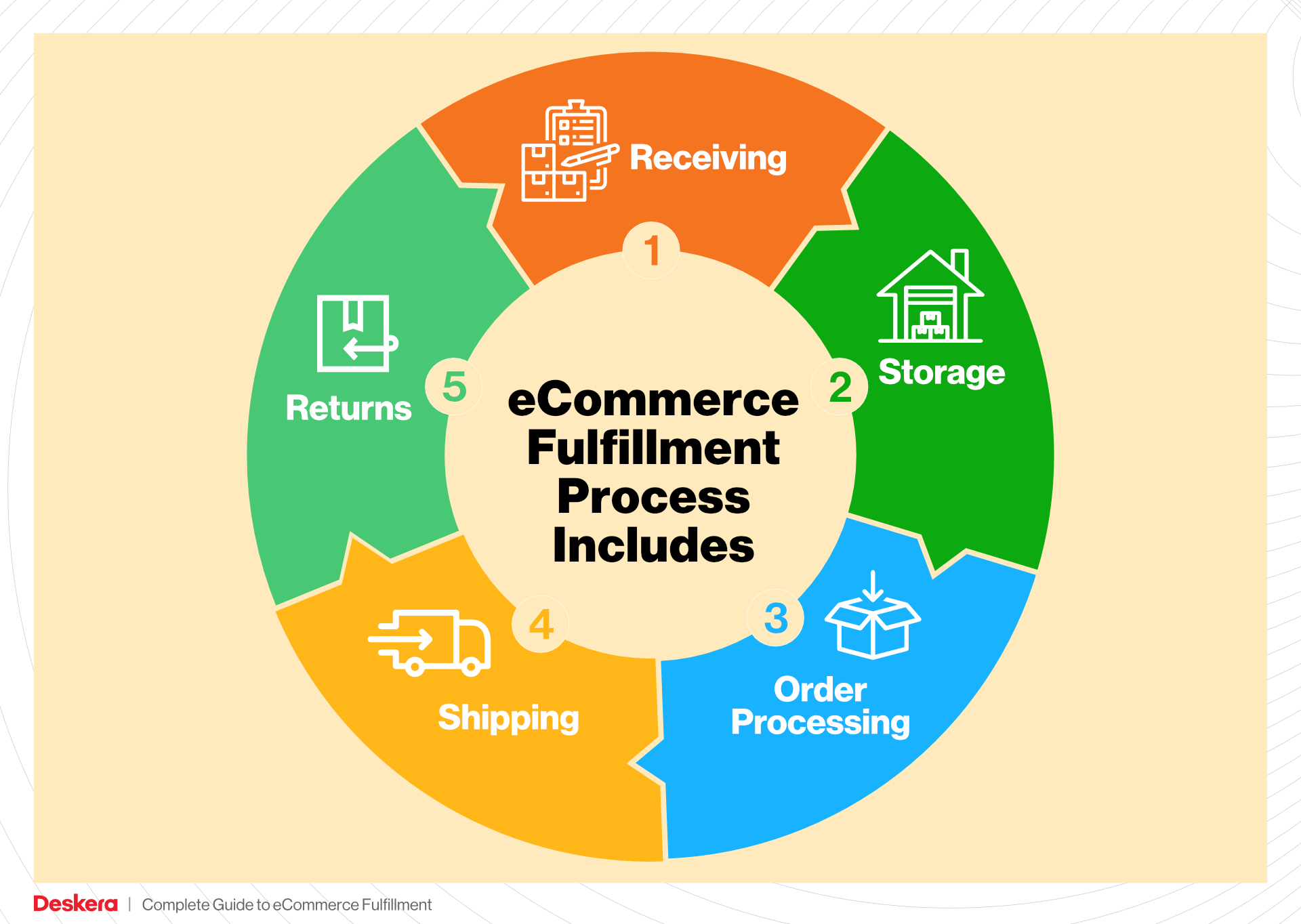
The goal of this guide is to empower you as a business owner to make smart, strategic decisions about your logistics operations. By gaining a deeper understanding of e-commerce fulfillment, you can optimize your processes, improve customer satisfaction, and ultimately scale your business with confidence. Let’s get started on this journey to streamline your fulfillment process and drive growth!
What You’ll Learn In This Guide
- What is E-commerce Fulfillment? An Introduction for Growing Businesses
- The Order Fulfillment Process: From ‘Buy’ Button to Customer’s Door
- Comparing Fulfillment Models: In-House vs. 3PL vs. Dropshipping
- A Deep Dive into Amazon FBA: Pros, Cons, and Who It’s For
- Core Services Offered by Fulfillment Centers
- How to Choose a Fulfillment Partner: A 6-Point Checklist
- Understanding Fulfillment Pricing: A Breakdown of Common Fees
- Frequently Asked Questions (FAQs) about Fulfillment
- Conclusion: Is Outsourcing Fulfillment the Right Move for Your Business?
- Important Disclaimer
The Order Fulfillment Process: From ‘Buy’ Button to Customer’s Door
1. Receiving Inventory
The order fulfillment process begins with receiving inventory at the fulfillment center, such as the VGT1 Amazon Fulfillment Center in Las Vegas. This step involves accepting shipments of products from suppliers and manufacturers. Upon arrival, each product is checked against purchase orders to ensure accuracy in quantity and quality.
This stage is critical for maintaining inventory accuracy and preventing stock discrepancies. A key term associated with this step is SKU (Stock Keeping Unit), which is a unique identifier assigned to each product to streamline tracking and management. Properly managing inventory at this stage sets the foundation for an efficient fulfillment process, as any errors can lead to delays down the line.
2. Warehouse Storage
Once inventory is received and verified, it is then moved to designated storage areas within the warehouse. The VGT1 facility utilizes advanced storage solutions that allow for efficient organization of products, often employing a robotics-assisted system to optimize space and accessibility.
This step is important because it maximizes storage efficiency and minimizes retrieval times. By employing systematic storage methods, such as ABC analysis, where products are categorized based on their sales velocity, businesses can enhance their operational efficiency. Proper warehouse storage ensures that products are easily accessible, reducing the time it takes to fulfill orders.
3. Order Picking
The next step in the fulfillment process is order picking, where items are selected from their storage locations based on customer orders. This is often facilitated by the use of pick lists, which are generated to guide warehouse associates to the exact locations of the items needed for each order.
Order picking is a crucial phase, as it directly impacts order accuracy and fulfillment speed. Efficient picking strategies, such as batch picking (where multiple orders are picked simultaneously), can significantly enhance productivity. As e-commerce continues to grow, optimizing this step becomes vital to meeting customer expectations for fast and accurate deliveries.
4. Order Packing
Once items have been picked, they move to the packing station, where they are prepared for shipment. This step involves placing items into appropriate packaging, ensuring that they are protected during transit. Packaging materials should be chosen based on the nature of the products being shipped, with considerations for weight, fragility, and size.
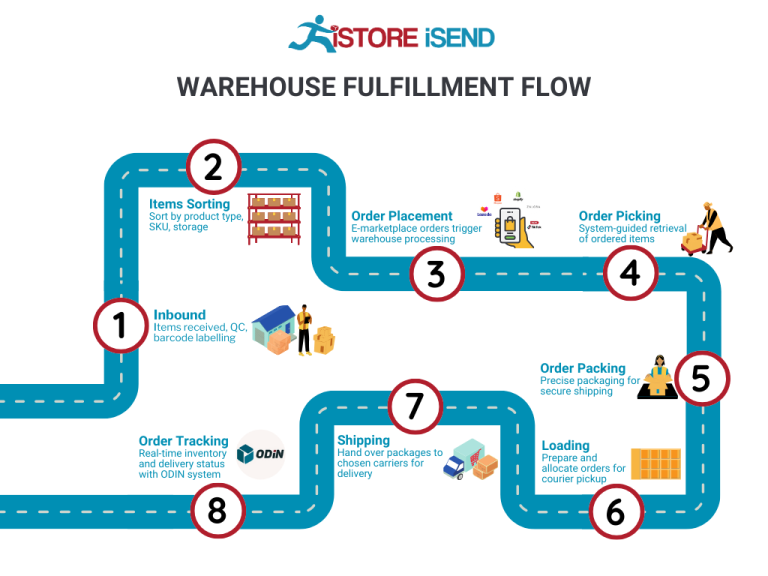
The importance of this step cannot be overstated; proper packing not only prevents damage but also influences shipping costs. A key term in this phase is dimensional weight pricing, which affects shipping fees based on the size of the package rather than just its weight. Efficient packing processes can lead to cost savings and improved customer satisfaction through timely and intact deliveries.
5. Shipping & Delivery
The final step in the order fulfillment process is shipping and delivery. Once packages are packed, they are labeled and sorted for shipment. At facilities like VGT1, advanced logistics systems help coordinate the movement of packages to various carriers, ensuring that they reach customers in a timely manner.
This stage is critical as it directly affects customer satisfaction and retention. Real-time tracking systems provide customers with updates on their order status, enhancing their overall experience. A key term associated with this step is last-mile delivery, which refers to the final leg of the shipping journey from a distribution center to the customer’s doorstep. Efficient last-mile delivery strategies can significantly improve delivery speed and reduce costs, making it a vital consideration for any e-commerce operation.
By understanding and optimizing each of these steps in the order fulfillment process, e-commerce businesses can enhance their operational efficiency, reduce costs, and ultimately improve customer satisfaction.
Comparing Fulfillment Models: In-House vs. 3PL vs. Dropshipping
Fulfillment Models Comparison
| Model | Who Handles Inventory | Best For (Business Stage) | Key Advantage | Key Disadvantage |
|---|---|---|---|---|
| In-House Fulfillment | The business itself | Established businesses | Full control over inventory and fulfillment | High overhead costs and resource-intensive |
| Third-Party Logistics (3PL) | An external logistics provider | Growing businesses | Scalable solutions and reduced operational burden | Less control over inventory and processes |
| Dropshipping | Supplier or manufacturer | Startups and small businesses | Low startup costs and no inventory holding | Lower profit margins and longer shipping times |
In-House Fulfillment
In-house fulfillment involves managing the entire order fulfillment process within your own organization. This model is typically adopted by established businesses that have the necessary resources and infrastructure to handle inventory, packing, and shipping. Companies that choose in-house fulfillment benefit from having complete control over their inventory management and fulfillment processes. This allows them to maintain high standards of quality control, customize packaging, and provide personalized service to customers. However, this model also comes with significant drawbacks, including high overhead costs associated with warehousing, staffing, and technology investments. Furthermore, as order volumes grow, businesses may find it increasingly challenging to scale their operations efficiently without incurring additional costs or compromising service levels.
Third-Party Logistics (3PL)
Third-party logistics (3PL) is a model where businesses outsource their fulfillment processes to specialized logistics providers. This is particularly advantageous for growing businesses that need to scale their operations without the burden of managing inventory and shipping logistics themselves. 3PL providers typically offer a range of services, including warehousing, order processing, and shipping, allowing businesses to focus on their core operations and customer service. The key advantage of using a 3PL is the ability to scale quickly; businesses can easily adjust their fulfillment needs as order volumes fluctuate. However, relying on a third-party provider means that businesses have less control over their inventory and fulfillment processes, which can lead to potential issues with quality, accuracy, and communication. Additionally, businesses may face challenges in integrating their systems with those of the 3PL, leading to delays or discrepancies in order fulfillment.
Dropshipping
Dropshipping is a fulfillment model where the retailer does not keep products in stock but instead transfers customer orders directly to a supplier or manufacturer, who then ships the products directly to the customer. This model is especially popular among startups and small businesses due to its low barrier to entry; entrepreneurs can launch an e-commerce store without the need to invest heavily in inventory or warehousing. The key advantage of dropshipping is that it allows businesses to offer a wide range of products without the financial risk associated with inventory holding. However, this model comes with its own set of challenges. Profit margins can be lower compared to other fulfillment methods due to reliance on suppliers for pricing and shipping. Additionally, dropshipping often results in longer shipping times, which can affect customer satisfaction. Businesses must also navigate potential issues with product quality and stock availability, as they have limited control over the fulfillment process.
In summary, the choice of fulfillment model—whether in-house, using a 3PL, or dropshipping—depends on various factors such as business size, operational capabilities, and growth ambitions. Understanding the strengths and weaknesses of each model can help business owners make informed decisions that align with their strategic goals and customer service commitments.
A Deep Dive into Amazon FBA: Pros, Cons, and Who It’s For
What is Fulfillment by Amazon (FBA)?
Fulfillment by Amazon (FBA) is a service that allows e-commerce sellers to leverage Amazon’s extensive logistics network to store, pack, and ship their products. By using FBA, sellers send their inventory to Amazon’s fulfillment centers, where Amazon takes on the responsibility for storage, order processing, and shipping directly to customers. This service is particularly appealing for sellers who wish to focus on growing their business rather than managing logistics.
When a customer orders a product listed as FBA, Amazon handles everything from the packing to customer service, including returns. This means that sellers can benefit from Amazon’s expertise in logistics while accessing a vast customer base that values convenience and speed.
How Does FBA Work?
-
Product Listing: Sellers create product listings on Amazon and select the FBA option. They can choose to have their inventory stored in various fulfillment centers across the country, including facilities like VGT1 in Las Vegas.
-
Inventory Shipment: Sellers ship their products to Amazon’s fulfillment centers. Amazon provides guidelines on how to package and label the products to ensure they are processed efficiently upon arrival.
-
Storage: Once the inventory arrives at the fulfillment center, it is stored until sold. Amazon has sophisticated inventory management systems in place to track products and ensure they are readily available for shipping.
-
Order Processing: When a customer places an order for a product, Amazon’s system automatically picks, packs, and ships the item from the nearest fulfillment center, ensuring faster delivery times.

-
Customer Service: Amazon manages all customer interactions, including inquiries, refunds, and returns, allowing sellers to focus on other aspects of their business.
-
Fees: Sellers are charged fees for storage space and fulfillment services, which vary depending on product size, weight, and the time of year.
Pros of Using FBA
1. Prime Eligibility
Products fulfilled by Amazon are eligible for Amazon Prime, which attracts a significant number of customers who prioritize fast shipping. This can lead to increased sales as Prime members often prefer to purchase products that qualify for this benefit.
2. Enhanced Customer Trust
Selling through FBA can enhance a seller’s credibility. Customers trust Amazon’s handling of orders and returns, which can lead to higher conversion rates. The Amazon brand is synonymous with reliability and customer service, making buyers more likely to purchase from FBA sellers.
3. Multi-Channel Fulfillment
FBA can also be utilized for multi-channel fulfillment, meaning sellers can use Amazon’s logistics to fulfill orders from other platforms, such as their own e-commerce website or eBay. This flexibility allows sellers to streamline their operations and reduce shipping costs.
4. Simplified Logistics
FBA simplifies the logistics of order fulfillment. Sellers do not need to worry about warehousing, packing, or shipping, allowing them to allocate resources to other critical areas like marketing and product development.
5. Scalable Solution
As businesses grow, FBA can scale alongside them. Sellers can adjust their inventory levels based on demand without having to invest in additional warehousing or logistics resources.
Cons of Using FBA
1. High Fees
FBA can be costly, especially for small businesses. Sellers incur fees for storage, fulfillment, and other services, which can eat into profit margins. It’s crucial for sellers to understand these costs and factor them into their pricing strategies.
2. Strict Inventory Rules
Amazon has strict guidelines regarding inventory management, including how products must be packaged and labeled. Non-compliance can lead to penalties, additional fees, or even account suspension. Sellers must stay up-to-date on these regulations to avoid issues.
3. Commingling Risks
FBA often uses a system known as commingling, where products from different sellers are stored together. This can lead to potential issues with product quality and returns, as sellers may receive returns for items they did not sell. This risk necessitates careful consideration, especially for brands with unique products.
4. Limited Control Over Fulfillment
By outsourcing fulfillment to Amazon, sellers have less control over the shipping process and customer experience. This can be a disadvantage if a seller wants to maintain a specific brand image or customer interaction style.
5. Dependency on Amazon
Using FBA can create a dependency on Amazon’s platform, which may limit a seller’s ability to diversify their sales channels. If Amazon changes its policies or fees, it can significantly impact a seller’s business.
Who is FBA Best For?
FBA is ideally suited for:
- Small to Medium-Sized Businesses: Those looking to scale quickly without the overhead of managing logistics can benefit from FBA’s extensive network.
- E-commerce Entrepreneurs: New sellers who want to tap into Amazon’s customer base and trust can leverage FBA to gain traction.
- Brands with High Sales Volumes: Businesses that have a steady stream of orders can efficiently manage fulfillment costs through FBA.
- Sellers with Diverse Product Lines: Those with a variety of products can streamline their operations by utilizing Amazon’s logistics to handle fulfillment across multiple categories.
In conclusion, while FBA offers significant advantages in terms of convenience, access to Amazon’s vast customer base, and operational efficiency, it also comes with its challenges, particularly regarding costs and control. Sellers should carefully evaluate their business needs and conduct thorough financial analyses before committing to this fulfillment strategy.
Core Services Offered by Fulfillment Centers
Inventory Management & Warehousing
Fulfillment centers like VGT1 provide comprehensive inventory management and warehousing services, ensuring that your products are stored efficiently and accurately. This involves the systematic organization of inventory within the warehouse, which includes tracking stock levels, managing replenishment, and optimizing storage space. Fulfillment centers utilize sophisticated inventory management systems that integrate with your e-commerce platform, allowing for real-time updates and visibility into stock levels.
The benefits of effective inventory management are multifold. For e-commerce businesses, it reduces the risk of stockouts and overstock situations, which can lead to lost sales or increased holding costs. Additionally, accurate inventory tracking helps in forecasting demand more effectively, allowing businesses to make informed purchasing decisions. By leveraging the storage capabilities of fulfillment centers, e-commerce owners can focus on scaling their operations without the burden of managing warehousing logistics.
Pick and Pack Services
Pick and pack services are a core offering of fulfillment centers, where items are selected from inventory (picked) and then packaged for shipment (packed). This process is critical in ensuring that orders are fulfilled accurately and efficiently. Fulfillment centers employ trained staff and automated systems to streamline this process, utilizing technology such as barcode scanning and robotics to minimize errors and speed up the picking process.
The primary benefit of pick and pack services is the enhancement of order accuracy and speed, which are vital for customer satisfaction in the e-commerce realm. Quick and accurate fulfillment leads to positive customer experiences, encouraging repeat purchases and brand loyalty. Additionally, outsourcing this process to a fulfillment center allows e-commerce businesses to scale operations without the need for additional labor or infrastructure, significantly reducing operational costs.
Kitting and Assembly
Kitting and assembly services involve the grouping of multiple products into a single package or kit, which can be particularly useful for businesses that offer bundled products or promotional items. Fulfillment centers like VGT1 have the capabilities to assemble products according to specific requirements, ensuring that each kit meets the business’s standards before shipping.
This service provides several benefits to e-commerce businesses. Firstly, it allows for the creation of unique product offerings that can attract customers, such as gift sets or themed bundles. Secondly, kitting can streamline the fulfillment process by reducing the number of individual items that need to be picked and packed for an order. This can lead to faster processing times and reduced labor costs. By utilizing kitting and assembly services, businesses can enhance their product offerings while optimizing their fulfillment operations.
Returns Management (Reverse Logistics)
Returns management, or reverse logistics, is a crucial service provided by fulfillment centers that handles the process of returning products from customers back to the warehouse. This includes receiving returned items, inspecting them, restocking them if they are in sellable condition, or managing their disposal if they are not. A well-managed returns process can significantly impact customer satisfaction and loyalty.
The benefits of effective returns management are substantial. A streamlined return process not only improves customer satisfaction by making it easy for customers to return items, but it also enhances the overall efficiency of the supply chain. Businesses that manage returns effectively can minimize losses from returned merchandise and quickly restock items that can be resold. Moreover, offering a hassle-free return experience can differentiate a brand in a competitive market, encouraging customers to make purchases with confidence.
Conclusion
In summary, fulfillment centers like VGT1 play an essential role in the e-commerce ecosystem by offering a range of core services that streamline operations and enhance customer satisfaction. From inventory management and warehousing to pick and pack services, kitting and assembly, and returns management, these services allow businesses to scale efficiently while focusing on growth and customer engagement. By partnering with a fulfillment center, e-commerce business owners can ensure that their logistics operations are optimized, enabling them to respond swiftly to market demands and consumer expectations.
How to Choose a Fulfillment Partner: A 6-Point Checklist
Location & Warehouse Network
The location of your fulfillment partner’s warehouses is crucial for ensuring timely deliveries and minimizing shipping costs. A strategically positioned warehouse network can significantly impact your operational efficiency and customer satisfaction.
Why It’s Important:
– Proximity to your customer base reduces shipping times and costs.
– Access to multiple warehouses can facilitate faster order processing and distribution.
Questions to Ask:
1. How many fulfillment centers do you operate, and where are they located?
2. How do your warehouse locations align with my target markets?
3. Can you provide insights into your shipping times and costs based on your current locations?
Technology & Integrations
In today’s digital age, the technology used by your fulfillment partner is a key factor in operational success. Effective technology can streamline processes, enhance visibility, and improve customer experiences.
Why It’s Important:
– Advanced systems enable real-time inventory tracking and order management.
– Seamless integrations with e-commerce platforms and other tools are essential for smooth operations.
Questions to Ask:
1. What warehouse management system (WMS) do you use, and how does it integrate with popular e-commerce platforms?
2. Can you provide real-time inventory tracking and reporting?
3. How do you handle order processing and fulfillment automation?
Specializations (e.g., Cold Storage, Oversized Items)
Different businesses have different needs, and your fulfillment partner should be equipped to handle your specific requirements, whether that involves cold storage, handling oversized items, or offering specialized packaging.
Why It’s Important:
– Specialized services can ensure compliance with industry regulations and maintain product integrity.
– Understanding your product type helps prevent damages and returns.
Questions to Ask:
1. Do you have facilities capable of handling my specific product types (e.g., perishables, fragile items)?
2. What special handling procedures do you have in place for sensitive or oversized items?
3. Are you able to accommodate seasonal fluctuations in demand for specialized products?
Scalability & Capacity
As your business grows, your fulfillment partner needs to be able to scale operations accordingly. A partner that can adapt to your growth trajectory will save you time, money, and stress.
Why It’s Important:
– A scalable partner can handle increased order volumes without compromising service quality.
– Capacity to expand services quickly can prevent disruptions during peak seasons.
Questions to Ask:
1. How do you manage capacity during peak seasons or unexpected spikes in demand?
2. What is your process for scaling operations to accommodate growth?
3. Can you provide examples of how you have successfully scaled for other clients?
Pricing and Contracts
Understanding the pricing structure and contract terms of your fulfillment partner is essential for maintaining profitability. Transparent pricing helps you forecast costs accurately and avoid unexpected expenses.
Why It’s Important:
– Clarity in pricing prevents budget overruns and financial surprises.
– Knowing contract terms helps ensure that you’re not locked into unfavorable conditions.
Questions to Ask:
1. Can you provide a detailed breakdown of your pricing model?
2. Are there any hidden fees or additional costs I should be aware of?
3. What are the terms of your contracts, and is there flexibility for renegotiation as my business evolves?
Customer Support & Reviews
The level of customer support offered by your fulfillment partner can significantly influence your experience and the satisfaction of your customers. Evaluating reviews and feedback can provide insights into their service quality.
Why It’s Important:
– Responsive customer support can resolve issues quickly, minimizing disruptions.
– Positive reviews indicate reliability and trustworthiness.
Questions to Ask:
1. What is your customer support structure, and how can I reach you if issues arise?
2. Can you share testimonials or case studies from current or past clients?
3. How do you handle customer complaints or fulfillment errors?
By carefully evaluating these six critical areas, e-commerce business owners, operations managers, and entrepreneurs can make informed decisions when selecting a fulfillment partner. A well-chosen fulfillment partner can not only enhance operational efficiency but also contribute to a positive customer experience and, ultimately, business growth.
Understanding Fulfillment Pricing: A Breakdown of Common Fees
Initial Setup Fees
When partnering with a fulfillment center like Amazon’s VGT1, the initial setup fees represent the cost incurred to establish your account and integrate your products into their system. These fees can vary based on several factors, including the complexity of your inventory and the level of customization required. Common components of initial setup fees include account configuration, software integration, and training for your team on using the fulfillment platform.
Typically, these fees are a one-time cost, but it’s essential to discuss all potential charges upfront. They can range from a few hundred to several thousand dollars, depending on the fulfillment provider and your specific needs. To mitigate these costs, ensure you have a clear understanding of the requirements and any additional services you may need during the onboarding process.
Receiving Fees
Receiving fees are charged when the fulfillment center accepts and processes your inventory. This includes the costs associated with unloading, inspecting, and cataloging your products. At VGT1, these fees are usually calculated per shipment or per pallet received, with rates varying based on the size and weight of the items.
For example, if you send a large shipment of products, you may incur higher receiving fees compared to smaller, individual shipments. To minimize these costs, consolidate shipments whenever possible and ensure that your products are properly labeled and packaged to facilitate quick processing upon arrival.
Storage Fees (per pallet/bin)
Storage fees are ongoing costs associated with keeping your inventory within the fulfillment center. These fees are typically calculated on a monthly basis and can be based on the number of pallets or bins your products occupy. At VGT1, storage fees may vary seasonally, often increasing during peak periods such as holidays when demand is high.
To manage storage costs effectively, it’s crucial to monitor your inventory levels and optimize the amount of product you store at the fulfillment center. Implementing just-in-time inventory practices can help reduce excess stock and minimize storage fees. Additionally, consider using analytics tools to forecast demand and adjust your inventory levels accordingly.
Pick & Pack Fees (per item/order)
Pick & pack fees are charged for the labor involved in retrieving items from storage and preparing them for shipment. This fee is typically calculated per item or per order, depending on the complexity of the order. For instance, if an order includes multiple items, the pick & pack fee will likely be higher than for a single item order.
At VGT1, you might see tiered pricing structures where the per-item fee decreases as the order volume increases. To optimize your fulfillment costs, focus on streamlining your product offerings and reducing the number of SKUs. This can lead to fewer pick & pack operations and lower overall fees. Additionally, consider packaging products together when it makes sense to increase efficiency during the picking process.
Shipping Fees
Shipping fees are the costs associated with transporting your products from the fulfillment center to the customer. These fees can vary significantly based on factors such as package weight, dimensions, shipping speed, and destination. VGT1, leveraging Amazon’s extensive logistics network, may offer competitive shipping rates, but it’s essential to understand how these fees are calculated.
Shipping fees can be a major component of your fulfillment costs, so it’s advisable to explore different shipping options and negotiate rates if possible. Many fulfillment centers provide tools to help you estimate shipping costs based on various scenarios, so take advantage of these resources to find the most cost-effective solutions for your business.
Tips for Getting an Accurate Quote
To obtain an accurate quote for fulfillment services at VGT1 or any fulfillment center, consider the following tips:
-
Provide Detailed Information: Be clear about your product types, dimensions, weight, and expected order volumes. The more detailed information you provide, the more accurate the quote will be.
-
Ask About All Fees: Ensure you inquire about all potential fees, including setup, receiving, storage, pick & pack, and shipping fees. Understanding the complete fee structure is crucial for budgeting.
-
Discuss Seasonal Variations: If your business experiences seasonal fluctuations, ask how these will affect your fees, particularly for storage and shipping during peak periods.
-
Negotiate Terms: Don’t hesitate to negotiate terms and fees, especially if you have a large volume of orders or a long-term partnership in mind. Many fulfillment centers are willing to offer discounts for higher volumes.
-
Utilize Technology: Leverage any available tools or software provided by the fulfillment center to simulate different scenarios and understand potential costs based on your unique business needs.
By following these steps, you can ensure that you receive a comprehensive and accurate quote that aligns with your business goals as you scale your e-commerce operations.
Frequently Asked Questions (FAQs) about Fulfillment
1. What is the VGT1 Amazon Fulfillment Center?
The VGT1 Amazon Fulfillment Center, located at 5802 E Tropical Pkwy, Las Vegas, NV, is a state-of-the-art facility designed to efficiently process and ship a wide variety of products for Amazon. This center utilizes advanced robotics and technology to streamline operations and ensure timely delivery of orders to customers.
2. How does the fulfillment process work at VGT1?
At VGT1, the fulfillment process involves receiving inventory, storing products, picking items for orders, packing them, and then shipping them out to customers. The facility uses robotics to assist with sorting and moving products, which enhances efficiency and accuracy in order fulfillment.
3. What types of products are handled at the VGT1 fulfillment center?
VGT1 is equipped to handle a diverse range of products, from small items to larger goods, as long as they fit within the facility’s operational parameters. This includes electronics, household items, clothing, and more, making it a versatile hub for e-commerce logistics.
4. What is the difference between a warehouse and a fulfillment center?
A warehouse is primarily focused on storage, while a fulfillment center is designed for the entire process of order processing, including picking, packing, and shipping. Fulfillment centers like VGT1 prioritize speed and accuracy in delivering products directly to customers, supporting e-commerce operations.
5. What is a Third-Party Logistics Provider (3PL)?
A Third-Party Logistics Provider (3PL) is a company that offers outsourced logistics services, which can include transportation, warehousing, and fulfillment. Businesses often partner with 3PLs to leverage their expertise and infrastructure, allowing them to scale operations without the need for significant investment in logistics infrastructure.
6. How much do fulfillment services cost?
The cost of fulfillment services can vary significantly based on factors such as the volume of orders, the complexity of the products, and the specific services required (e.g., storage, packing, shipping). Typically, costs may include fees for storage space, order processing, and shipping, and it’s advisable to request a quote tailored to your business needs.
7. How can I ensure my products are stored properly at VGT1?
To ensure your products are stored properly at VGT1, it’s essential to follow Amazon’s guidelines for packaging and labeling. Properly packaged products minimize damage and ensure they are easily identifiable during the picking process. Regular communication with the fulfillment center can also help address any specific storage needs.
8. What are the benefits of using the VGT1 fulfillment center for my e-commerce business?
Utilizing the VGT1 fulfillment center can enhance your e-commerce business by providing faster shipping times, access to Amazon’s logistics network, and reduced operational overhead. The advanced technology and experienced staff at VGT1 help streamline your fulfillment processes, allowing you to focus on other areas of your business.
9. Can I track my inventory stored at VGT1?
Yes, Amazon provides tools for tracking your inventory stored at the VGT1 fulfillment center. Through your Seller Central account, you can monitor stock levels, order statuses, and fulfillment metrics, enabling you to manage your inventory effectively.
10. What should I consider when choosing a fulfillment center?
When choosing a fulfillment center like VGT1, consider factors such as location, technology capabilities, scalability, service offerings, and cost structure. It’s also important to evaluate the fulfillment center’s track record in terms of speed and accuracy, as well as their ability to handle your specific product types and order volumes.
Conclusion: Is Outsourcing Fulfillment the Right Move for Your Business?
Evaluating the Benefits of Outsourcing Fulfillment
Outsourcing your fulfillment process can be a game-changer for your e-commerce business. By leveraging a fulfillment service, you can save significant time and resources, allowing you to focus on core business activities such as product development and marketing. Fulfillment centers, like Amazon’s VGT1 in Las Vegas, are designed to handle complex logistics, enabling you to streamline your operations and enhance customer satisfaction through faster delivery times.
Scalability is another compelling advantage of using a fulfillment service. As your business grows, so do your logistics needs. A dedicated fulfillment partner can easily adapt to fluctuations in order volume, whether you’re experiencing seasonal spikes or launching new products. This flexibility ensures that you can meet customer demand without overextending your resources or compromising service quality.
Moreover, partnering with an experienced fulfillment center provides access to industry expertise and advanced technology. These facilities are equipped with state-of-the-art systems that optimize inventory management and order processing. This not only reduces the likelihood of errors but also enhances overall efficiency—key factors in maintaining a competitive edge in the e-commerce landscape.
However, choosing the right fulfillment partner is crucial to your growth strategy. Conduct thorough research to assess potential partners’ capabilities, reliability, and track record. Consider their technology, geographic reach, and customer service to ensure they align with your business goals.
Take Action
To determine if outsourcing fulfillment is the right move for your business, conduct an audit of your current shipping process. Evaluate your pain points, order volumes, and growth projections. This analysis will help you identify whether partnering with a fulfillment service could streamline your operations and drive your business forward. Embrace the potential of fulfillment outsourcing and position your business for scalable success.
Important Disclaimer
⚠️ Important Disclaimer
The information in this guide is for educational purposes. Fulfillment services, pricing, and platform features change frequently. Always conduct your own due diligence and consult with providers directly before making business decisions.
